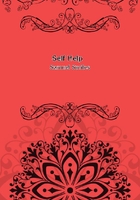
第57章
Titian, also, was an indefatigable worker. His celebrated "Pietro Martire" was eight years in hand, and his "Last Supper" seven. In his letter to Charles V. he said, "I send your Majesty the 'Last Supper' after working at it almost daily for seven years - DOPOSETTE ANNI LAVORANDOVI QUASI CONTINUAMENTE." Few think of the patient labour and long training involved in the greatest works of the artist. They seem easy and quickly accomplished, yet with how great difficulty has this ease been acquired. "You charge me fifty sequins," said the Venetian nobleman to the sculptor, "for a bust that cost you only ten days' labour." "You forget," said the artist, "that I have been thirty years learning to make that bust in ten days." Once when Domenichino was blamed for his slowness in finishing a picture which was bespoken, he made answer, "I am continually painting it within myself." It was eminently characteristic of the industry of the late Sir Augustus Callcott, that he made not fewer than forty separate sketches in the composition of his famous picture of "Rochester." This constant repetition is one of the main conditions of success in art, as in life itself.
No matter how generous nature has been in bestowing the gift of genius, the pursuit of art is nevertheless a long and continuous labour. Many artists have been precocious, but without diligence their precocity would have come to nothing. The anecdote related of West is well known. When only seven years old, struck with the beauty of the sleeping infant of his eldest sister whilst watching by its cradle, he ran to seek some paper and forthwith drew its portrait in red and black ink. The little incident revealed the artist in him, and it was found impossible to draw him from his bent. West might have been a greater painter, had he not been injured by too early success: his fame, though great, was not purchased by study, trials, and difficulties, and it has not been enduring.
Richard Wilson, when a mere child, indulged himself with tracing figures of men and animals on the walls of his father's house, with a burnt stick. He first directed his attention to portrait painting; but when in Italy, calling one day at the house of Zucarelli, and growing weary with waiting, he began painting the scene on which his friend's chamber window looked. When Zucarelli arrived, he was so charmed with the picture, that he asked if Wilson had not studied landscape, to which he replied that he had not. "Then, I advise you," said the other, "to try; for you are sure of great success." Wilson adopted the advice, studied and worked hard, and became our first great English landscape painter.
Sir Joshua Reynolds, when a boy, forgot his lessons, and took pleasure only in drawing, for which his father was accustomed to rebuke him. The boy was destined for the profession of physic, but his strong instinct for art could not be repressed, and he became a painter. Gainsborough went sketching, when a schoolboy, in the woods of Sudbury; and at twelve he was a confirmed artist: he was a keen observer and a hard worker, - no picturesque feature of any scene he had once looked upon, escaping his diligent pencil.
William Blake, a hosier's son, employed himself in drawing designs on the backs of his father's shop-bills, and making sketches on the counter. Edward Bird, when a child only three or four years old, would mount a chair and draw figures on the walls, which he called French and English soldiers. A box of colours was purchased for him, and his father, desirous of turning his love of art to account, put him apprentice to a maker of tea-trays! Out of this trade he gradually raised himself, by study and labour, to the rank of a Royal Academician.
Hogarth, though a very dull boy at his lessons, took pleasure in making drawings of the letters of the alphabet, and his school exercises were more remarkable for the ornaments with which he embellished them, than for the matter of the exercises themselves.